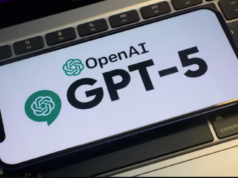Exploring the Boundary of Human-AI Collaboration in the Age of OpenAI

Unlocking the potential of collaboration between humans and AI systems in the era of OpenAI.
The Rise of OpenAI and Its Implications
OpenAI, one of the leading organizations in artificial intelligence research, has gained significant attention for its groundbreaking advancements in machine learning models and language generation algorithms. The advent of OpenAI’s powerful models, such as GPT-3, has opened up new possibilities for human-AI collaboration across various domains.
The boundary between humans and AI is becoming increasingly blurred, as OpenAI’s models showcase remarkable language comprehension, context awareness, and creative generation capabilities. This prompts us to explore the potential of collaboration between humans and AI systems, transcending the traditional role of AI as a mere tool or assistant.
Collaboration beyond Tool-like Assistance
Human-AI collaboration has evolved from basic programmatic interactions to more dynamic and nuanced partnerships. While AI systems certainly excel at processing vast amounts of data and extracting valuable insights, it is the human creativity, intuition, and critical thinking that bring unique perspectives to problem-solving.
“The power of human-AI collaboration lies in combining the strengths of both entities – the computational power, efficiency, and scalability of AI, and the human judgment, emotional intelligence, and ethical considerations.”
Rather than fearing AI as a disruptive force, it is crucial to embrace its potential as a collaborative partner. OpenAI’s models can be leveraged to augment human abilities, enabling individuals to perform tasks at an unprecedented scale and efficiency.
Applications and Ethical Considerations
The applications of human-AI collaboration are vast. From content creation and data analysis to healthcare diagnostics and scientific research, AI systems can complement human efforts, accelerating progress and expanding our capabilities. However, ethical considerations must be at the forefront to ensure that AI remains a force for good.
Balancing AI’s capabilities with human judgment becomes crucial when addressing sensitive issues like misinformation, biased data, and privacy concerns. Transparent guidelines, regulatory frameworks, and close collaboration among researchers, policymakers, and users are essential in navigating the boundary of human-AI collaboration responsibly.
Embracing a Collaborative Future
As OpenAI continues to push the boundaries of what AI can achieve, it is vital to foster a collaborative mindset. Embracing human-AI collaboration can unlock new possibilities, accelerate innovation, and address complex global challenges.
The age of OpenAI signifies a pivotal moment in our relationship with AI systems. By exploring the boundary of human-AI collaboration together, we can create a future where the harmonious partnership between humans and AI unleashes transformative advancements that benefit society as a whole.









